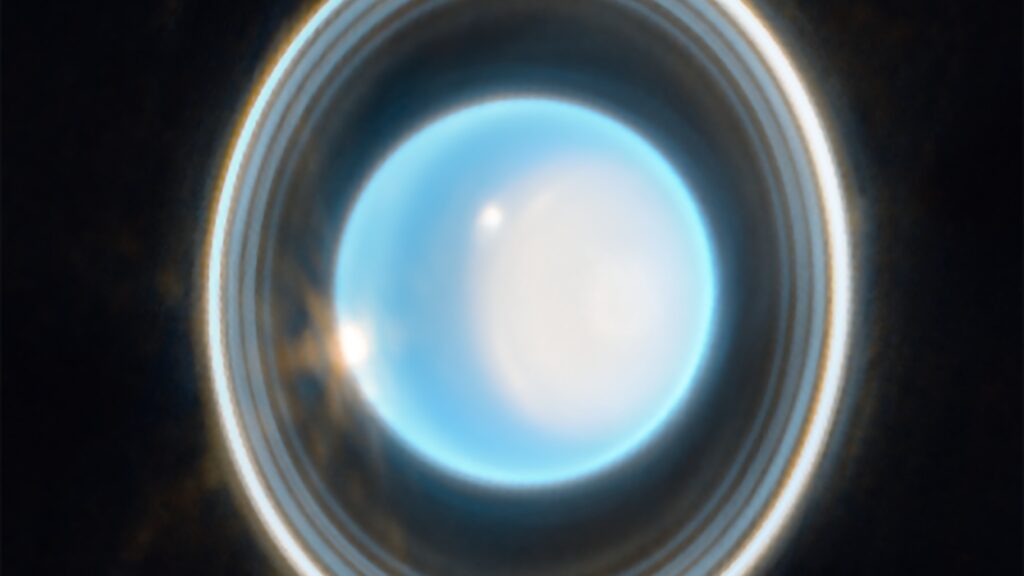
The James Webb Space Telescope has made a significant discovery by identifying a previously unknown moon orbiting Uranus. This finding increases the total number of moons known to orbit the solar system’s seventh planet to 29.
Uranus, an ice giant characterized by its unique tilt, continues to intrigue astronomers. The new moon has yet to receive an official name. The discovery highlights the ongoing capabilities of the James Webb Space Telescope, which has been operational since its launch in December 2021.
Expanding Our Understanding of Uranus
Astronomers have long been fascinated by Uranus, which has a distinct tilt of approximately 98 degrees. This tilt causes extreme seasonal variations and unusual weather patterns. The recent discovery adds to the planet’s complexity, as researchers strive to understand the formation and evolution of its moons.
The identification of the new moon is particularly notable because Uranus had not been believed to harbor any additional natural satellites. This finding could provide insights into the conditions of the early solar system and the processes that led to the formation of moons around gas giants.
The data was collected during a series of observations conducted by the James Webb Space Telescope. NASA officials expressed excitement over the findings, emphasizing the telescope’s role in revealing new aspects of our solar system. The telescope’s advanced infrared capabilities allow it to observe celestial bodies that are otherwise difficult to detect.
Significance for Future Research
This discovery has implications for future research into Uranus and its moons. The International Astronomical Union, which oversees the naming of celestial bodies, will likely play a role in naming the new moon. As more data becomes available, scientists will analyze its orbit, size, and composition, contributing to a deeper understanding of Uranus’s environment.
The James Webb Space Telescope’s successful detection of this moon reinforces its importance as a tool for modern astronomy. Researchers are optimistic that further observations will yield even more discoveries in our solar system and beyond.
In summary, the discovery of a new moon orbiting Uranus showcases the ongoing advancements in space exploration and our quest to uncover the mysteries of the universe. As astronomers continue to study this ice giant, the insights gained may reshape our understanding of planetary formation and dynamics within the solar system.






